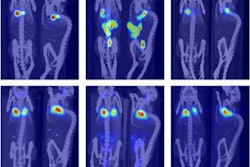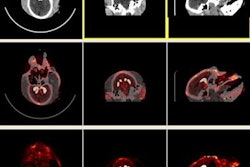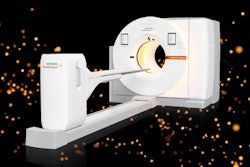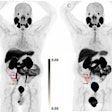Molecular imaging in mice has shown for the first time that environmental pollutants such as polyethylene microplastic could be a risk factor for kidney dysfunction, according to researchers in Seoul, Korea.
A team at the Korea Institute of Radiological and Medical Sciences performed micro-SPECT imaging scans in mice after they injected them with a polyethylene solution, with the scans indicating that their kidneys were not fully functioning compared with noninjected mice.
“These findings underscore the potential adverse effects of [microplastic] pollution on kidney health and highlight the importance of further research in understanding and mitigating these effects on human health,” noted postdoctoral researcher and lead author Javeria Zaheer, PhD. The study was published August 14 in Chemosphere.
The worldwide proliferation of persistent environmental pollutants is accelerating at an alarming rate, with pollutants such as microplastics posing a risk to human health, the authors wrote. Molecular imaging techniques are being harnessed in basic research to visualize the pharmacokinetics of these pollutants, they noted.
To further advance understanding in this area, the group focused on the accumulation of polyethylene (PE) in kidneys after feeding six mice daily a total of 100 ppm (∼equivalent to 0.1mg/mL)/100 μL of PE for a period of 12 weeks using a sterile, single-use, animal feeding needle.
They assessed renal failure in these mice compared to noninjected mice using technetium-99m dimercaptosuccinic acid (Tc-99m DMSA) and technetium-99m diethylene triamine penta acetic acid (Tc-99m DTPA) imaging with a micro-SPECT device. In humans using clinical SPECT scanners, these tests are the gold standard for evaluating kidney function.
According to the findings, compared with six untreated mice, the Tc-99m DTPA scans revealed that a quantitative parameter known as the time to half peak maximum, or T1/2(max) – a measure that indicates how long the kidneys take to process a substance – was significantly lower (70.1) in the PE mice compared with the control mice (140.8).
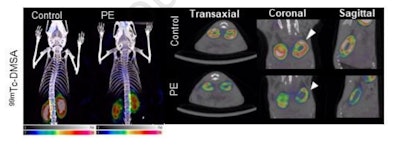 A micro-SPECT image of a mouse treated with polyethylene microplastic showing decreased uptake of TC-99m DMSA radiotracer.Image courtesy of Chemosphere
A micro-SPECT image of a mouse treated with polyethylene microplastic showing decreased uptake of TC-99m DMSA radiotracer.Image courtesy of Chemosphere
In addition, the Tc-99m DMSA scan showed a 0.5-fold decrease in renal tubular function in the treated mice, with 7.71 MBq/mL of renal radiotracer uptake activity in the treated mice compared with 13.773 MBq/mL in the control mice.
Renal failure was confirmed using serum tests for urine creatinine, serum blood urea nitrogen levels, serum albumin levels, and urine albumin levels in PE exposed mice relative to the control mice.
“We may conclude that chronic exposure to PE could be a potential risk factor for renal dysfunction,” the researchers wrote.
Ultimately, in humans, a decline in renal function is associated with an increased risk of early-onset kidney cancer and the study of the impact of microplastics on renal failure is gaining importance, the authors noted.
Animal studies using molecular imaging techniques are adding to a growing body of research in the field aimed at understanding the impact of these pollutants, they wrote.
“In sum, PE exposure induced renal dysfunction in a murine model,” the group wrote.
You can read the full study here.






